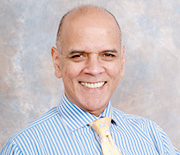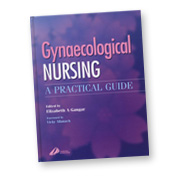The Team
Surrey Gynaecology is run by Kevin and Elizabeth Gangar of Weybridge, Surrey.
Mr Kevin Gangar – Senior Consultant

Qualifications
MA MB BChir Cambridge
FRCS (Fellow of Royal College of Surgeons)
FRCOG (Fellow of Royal College of Obstetricians & Gynaecologists)
LLB (Hons) Bachelor of Laws
Education
Kevin qualified as a Doctor at the University of Cambridge where his interest in Reproductive Physiology was inspired by his teacher Professor Robert Edwards who went on to win the Nobel prize for medicine for his pioneering work in in vitro fertilisation.
My early post graduate training was undertaken at Addenbrookes Hospital in Cambridge where I met Elizabeth. I am a Fellow of the Royal College of Surgeons and Fellow of the Royal College of Obstetricians & Gynaecologists.
My Specialist Training was undertaken in London at The Hammersmith Hospital with Lord Robert Winston. I went on to become Registrar at Kings College Hospital and then Research Fellow in Menopause Studies.
I was a Clinical Registrar and Research Fellow* in the Menopause Clinic at Kings College Hospital London in London where I published extensively on the subject of the menopause and HRT. Following this I went on to be Lecturer and then acting Senior Lecture at Imperial College School of Medicine (St Mary’s Hospital, London).
Mrs Elizabeth Gangar – SRN
Elizabeth Gangar qualified at Addenbrookes Hospital Cambridge as a general nurse and is also qualified midwife. She was previously Gynaecology Nursing Sister at Kings College Hospital and subsequently Queen Charlotte’s Hospital in London.
She has also published the definitive textbook on Gynaecological nursing.
In addition to this Practice, Elizabeth does sessional work at the Family Planning Clinic at Weybridge Hospital.
We have been married for 26 years and have 2 children, George and Rosie.
The Practice
The emphasis is very much one of delivering a personal and local service for the needs and concerns of the individual woman. All aspects of general Gynaecology are covered and Tertiary links to subspecialist Centres are available when required, e.g. cancer treatment, IVF et cetera.
Every effort is made to individualise the patient’s treatment to her own needs within the context of her lifestyle, job, family commitments etc. All available treatment options are discussed with the patient who is at the centre of decision-making.
Investigations, tests and surgery are only undertaken when these are appropriate and necessary. Every effort is made to minimise inconvenience to the patient. Where it is appropriate, procedures are done at the same visit e.g. blood tests and smear. Other more complex procedures can be done under local anaesthetic, rather than general, e.g. change of lost coils, difficult coil insertions, removal of polyps, cautery of cervical erosions etc… This minimises inconvenience, cost and time off work etc…
Appointments are available at a number of venues and online, to accommodate busy women with families and jobs. It is almost always possible to be seen at short notice.
Patient Feedback
I just wanted to say a personal thank you to you both for the care I have received over the past 3 months. Nothing has ever seemed like too much trouble and the appointments have been in quick succession. Just one-week post-op and I am feeling the benefit of this operation, it’s amazing.
Thank you so much.
Had a beautiful baby boy in May.
Thank you to you and your lovely wife for everything.
I simply cannot thank you enough for the attention and support you have given Lucy. It is undoubtedly a most difficult time for us and without your expertise and incredible kindness (beyond the call of duty) I dread to think where we would be! Our very best wishes and enormous thanks.
Publications
Publications
Peer Review Publications, Kevin F Gangar
Gangar KF, Vyas S, Whitehead MI, Crook D, Meire H, Campbell S. Pulsatility Index in the Internal Carotid Artery in relation to transdermal oestradiol and time since menopause. Lancet 1991;338: 839-842.
Vyas S, Gangar KF. Postmenopausal oestrogens and arteries. Editorial, Br J Obstet Gynaecol 1995, 102:942-946.
Godsland IF, Gangar KF, Walton C, Cust MP, Whitehead MI, Wynn V, Stevenson JC. Insulin resistance, secretion and elimination in women undergoing oral or transdermal postmenopausal hormone replacement therapy. Metabolism 1993; 42: 846-853.
Gangar KF, Stones RW, Saunders D, Rogers V, Rae T, Cooper S, Beard RW. An alternative to hysterectomy? GnRH analogues combined with Hormone Replacement Therapy. Br Journal ofObstet and Gynaecol. 1993; 100: 360-364.
An alternative to hysterectomy? GnRH analogue combined with hormone replacement therapy
Crook D, Cust MP, Gangar KF, Worthington M, Hillard TC, Stevenson JC, Whitehead MI, Wynn V. Comparison of transdermal and oral oestrogen/progestin repalcement therapy: effects on serum lipids and lipoproteins. Am J Obstet Gynaecol1992; 166,3: 950-955.
Reid BA, Gangar KF, Rogers V, Stones RW, Thomas E, Murphy M, Beard RW. Long-term results of bilateral oophorectomy for the treatment of chronic pelvic pain: Pain relief and HRT requirements. Br Journal of Obstet Gynaecol. 1996; 16:538-543.
Noncyclic Chronic Pelvic Pain Therapies for Women: Comparative Effectiveness
Reid BA, Gangar KF, Beard RW. Severe endometriosis treated with GnRH analogues and continuous combined hormone replacement therapy. Br J Obstet Gynaecol1992; 99,4: 344¬355.
Beard RW, Kennedy RG, Gangar KF, Stones RW, Rogers VB, Reginald PW, Anderson M. Bilateral oophorectomy and hysterectomy in the treatment of intractable pelvic pain associated with pelvic congestion. Br J Obstet Gynaeco11991; 98, 10: 988-992.
Oophorectomy: the debate between ovarian conservation and elective oophorectomy
Benness C, Gangar K, Cardozo L, Cutner A, Whitehead M. Do progestogens exacerbate urinary incontinence in women on HRT? Neurology and Urodynamics 1991; 10: 4, 316.
Gangar KF, Fraser DF, Whitehead MI, Cust MP. Prolonged endometrial stimulation associated with oestradiol implants. Br Med J 1990; 300: 436-8.
Gangar KF, Cust MP, Whitehead MI. Symptoms of oestrogen deficiency associated with supraphysiological plasma oestradiol concentration in women with oestradiol implants. Br Med J 1989; 299: 601-2.
Stevenson JC, Lees B, Devenport M, Cust MP, Gangar KF. Determinates of bone density in normal women: risk factors for future osteoporosis? Br Med J 1989; 298: 924-8.
Gangar KF, Siddall.Allum JS, Reid BA, Beard RW. The aetiology and treatment of pelvic pain. 1992. J Obstet Gynaecol; 12: S46-49.
Gangar KF, Saunders D, Davies L, Beard RW. The economic and human cost of gynaecological pain. 1992. J Obstet Gynaecol;12: S50-52.
Foong C, Connell RJ, Gangar KF, Bridgewood PS, Wright JT. A Comparison of laparoscopic versus conventional surgery in the management of ectopic pregnancy. British Journal of Gynaecological Endoscopy. 1995; 4: 21-24.

